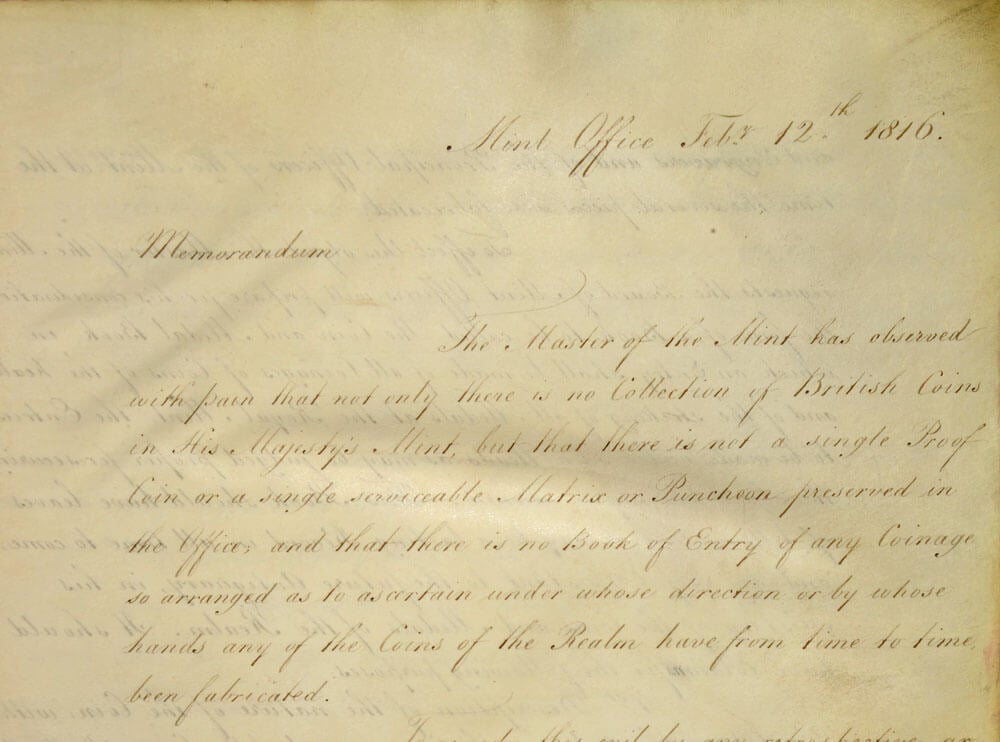Founding the Royal Mint Museum
The Royal Mint Museum was established by the Master of the Mint William Wellesley Pole on 12 February 1816. A dissatisfied Pole was to observe that, ‘not only is there no collection of coins in His Majesty’s Mint, but that there is not a single proof’, and in a signed memorandum acknowledged the need for a collection of proof pieces and coinage tools to overcome the absence of coins and medals. In an era that increasingly uplifted the arts, Pole was committed to the quality and aesthetics of production. He wanted to build a collection that would include, promote, and be of perpetual service to artists and engravers.

New cabinets were installed to hold the collection in the board room. From that time on, a proof specimen of every coin and medal struck at the Mint was set aside for the Museum along with matrices and punches. The accessions register records that the 1813 Military guinea was the first coin in the collection. The oldest object in the collection dated to around 1801. This thankfully changed in 1818 when a significant donation of coins, medals and books greatly enhanced the Museum’s collection. The large and well organised collection came from the estate of Sarah Sophia Banks, whose brother, Sir Joseph Banks, was the President of the Royal Society and a member of the Privy Council Committee on Coin. A large selection of items was given to the British Museum and around 2,500 coins and medals were gifted to the Royal Mint Museum. These specimens, along with Sarah Sophia Banks’ numismatic library, remain a core part of the Museum’s collection today.
